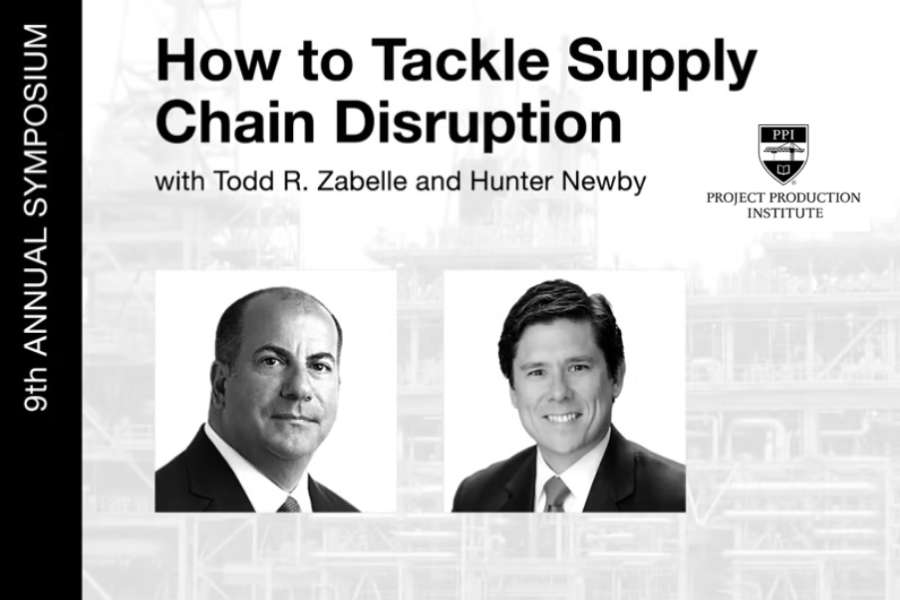Series Introduction
May 21, 2021
The original “Meet Me In...” series appeared in Fat Pipe Magazine from February 2003 to November 2004 featuring 27 Carrier Hotels and Meet Me Rooms in 21 North American markets. The series evolved in its third year from February 2005 to November 2005 to feature the then cutting edge Ethernet and VoIP service providers in 11 of those 21 markets. The series now evolves again, in the year 2021 – 18 years after its start, now featuring the Internet Exchanges that exist today in those 21 markets.
Starting in 2021, with the help of our development team and PeeringDB, we are able to accomplish the goal of the "Meet Me In..." series with real-time data. The tables in these articles will update every night, so the data in these articles will always remain current as it relates to the exchanges, facilities, and networks present at each. This research series is the one place that consolidates it all.
This is a 18 year-later update on the original 2 Year, 21 part series of the key Carrier Hotels in North America that appeared in Fat Pipe Magazine, published by Dagda Mor Media and its Editor, Bob Tisch.
Excerpt from the original 2003 series introduction:
Editor’s note: This is the first in a series of articles in which Hunter Newby, TELx executive vice president, will discuss carrier inter- connection options available in 10 major North American cities. The ongoing series will include key information on infrastructure, power and HVAC information in the carrier hotel and primarily will focus on the largest carrier-neutral “meet me” facility in each building.
We believe that Mr. Newby knows the subject as well as anyone, even the Dagda. So when he was gracious enough to take this assignment, we suggested that he start with the renown 60 Hudson Street in New York, also known as his own backyard. Indeed, TELx operates the carrier-neutral interconnect facility with the greatest number of “touch points” (to other networks) at 60 Hudson. So we asked him to begin his effort there.
This series also will cover Los Angeles, Atlanta, Seattle, Miami, Toronto, Chicago, Philadelphia and Dallas. Readers will select the last city profiled. Send your suggestions to suggestions@telx.com.
Back then, the terms “Carrier Hotel” and “Meet Me Room” were not well known. I pitched Bob on the idea for this series and he presented it to the industry in this way. No one wants to read “news” that is actually a sales pitch, so I had to do my best to make it fair. I had to create the playing field, put myself on it and then level it.
The reason there were 21 issues is because I started publishing in February 2003, missing January and Fat Pipe Magazine always took off the month of December, so the series skipped a total of 3 months in the 2 years. 21+3=24.
Then the "Meet Me In" series evolved in to a 3rd year
Editors’ note: As the interconnection business evolves so to does the “Meet Me In” series. Throughout 2004, we used this space to identify the key physical layer carrier interconnection points within the major North American markets. This year the series moves forward to identifying the key service providers with wholesale enterprise- focused offerings within those markets.
Clearly, the key services in the greatest demand by enterprise users today are Ethernet transport, both metro and long haul, and voice over Internet protocol (VoIP). And since most enterprises deploying VoIP only want to do so over a private native layer 2 network, it’s enterprise VoIP demand that’s driving Ethernet transport demand.
So, each month, the series will focus on the previously featured carrier hotels and their carrier customer bases. A list of standard questions will be presented to the known Ethernet transport and VoIP service providers separately within each facility. The primary objective is to identify which carriers are offering Ethernet transport for enterprise wide area networks and which VoIP carriers enterprise networks can directly connect to at each carrier hotel in order to maximize savings.
Many of us remember, but some in the industry today probably do not, that VoIP and Ethernet were both once considered “garage technology” they were widely disparaged and there were many skeptics. The skeptics undoubtedly were all incumbents, or those with as-risk capital invested in legacy technology businesses and trying to buy time to make their escape. I on the other hand was carrier (and technology) neutral, so as I spotted the trend I got out ahead of it to make sure that all of the carrier / network operator demand for access to these new technologies knew where to go to get access to them in the featured cities, and also importantly, who to contact at the providers of said services. The efficient and effective combination of these data points is what accelerates the growth of any interconnection business, both then and now, and in to the future.
Has it been that long?
It has been nostalgic to re-read the articles and remember those early days in the industry where I had to wear multiple hats, including that of journalist and author, to define the very space that I was in, known as Carrier Hotels and Meet Me Rooms, because it was obscured at that time by the term “Web Hosting Facility”. I knew what we were building at telx was different, but no one else outside of us did. I had to find a way to explain it that would cut through the noise and do it on a very low budget. I want to thank Bob Tisch again for giving me the opportunity to write this series and help to shape and define the carrier neutral interconnection space.
The reason why I called it the “Meet Me In” series was because at the time, when wholesale voice carriers would sit down to have a buy/sell conversation at GTM, or some other industry conference, they would always conclude the deal with naming the common location where they could interconnect to consummate the transaction. They would say, “Meet Me in 60 Hudson”, or “Meet Me in (fill in the address)”. This was always a good start, but usually ended up with the two carriers being in different rooms on different floors within the same building, typically very far and many walls and floors apart and they would still require local loops to get connected. If they needed a local loop they didn’t really need to be in the same building in the first place, but everyone was so set on being at the same address, so I decided to become the place at the address where everyone actually was. I was diligently working on making telx the neutral (meaning, non-carrier owned) meet point at 60 Hudson where every carrier could have at least a demarcation point, if not their entire core network.
My strategy for this exercise back then was two-fold. I started the “Meet Me In” series with the original telx 23rd and 9th floor facilities, at 60 Hudson St in New York because that was the business I was building at the time and I needed to create the category (Meet Me Rooms) in the industry that we were in (Neutral Colocation) and then put us in it. So, I did and logically I put us first. It may seem self-serving, but I had to establish myself as a credible source. I thought, what better way as an owner/operator to get my story out than as a journalist bringing valuable information to the industry? I didn’t have enough room in the magazine for the first issue to cover more than my own site and explain the purpose of the series, but went on to cover many more cities and sites that I had no economic interest in - at least not at the time of writing the article.
The second part of my strategy was related to growing the telx business through acquisition. I knew what these carrier hotel building assets were, how to find them and that they are very difficult to replicate. That makes them very unique and valuable. So, the purpose for the series was in fact to perform preemptive due diligence on all of the carrier hotel assets that I intended to acquire. It was my roll up strategy.
One of the great benefits of being a journalist was that it was very disarming for the local building and, or existing Meet Me Room business owners. If I called them as Hunter Newby from telx in New York and started asking questions they would hang up, but if I called them as a journalist representing an industry magazine looking to write a story about them they told me everything.
Beyond publishing the article, I told them I would assist in positioning their assets properly in the telecom industry, introduce them to national and international network customer opportunities and help them increase their NOI and all that I asked in return was that if they ever decided to sell they would call me first and give me a shot. No paper, no formal agreement. It was just a handshake deal, based on honor and respect. I was paying it forward and it has paid off.
As of today, I have been involved in M&A transactions involving the Carrier Hotel, Meet Me Room, or both in 12 out of the 21 cities featured in the series, beginning with the acquisition of 56 Marietta St in Atlanta in May 2004 while I was with telx, and 8 transactions involving 5 sites in those markets that weren’t in the original series. Beyond the 21 featured cities, I have been involved in Carrier Hotel and Meet Me Room M&A transactions in 5 other cities, including one of my all-time favorites, Kansas City (1102 Grand) and also Houston, which only goes to show that there are always more places to find opportunity than originally known, or considered in this business. Best of all, throughout this entire journey, I have developed great relationships with the original owners of many of those sites that I still have to this day.
The more things change, the more they stay the same.
There have been three major changes in the past 18 years...
1. More Sites in Each City. The original site list included the primary, and or primary and secondary core interconnection Carrier Hotel sites in each city. Today, one might argue that certain “interconnection data centers” should be on the list as well. I agree, but with a disclaimer. If you know me you know I do not particularly like the term “data center” because it is a catch-all for anything and everything in the interconnection real estate network infrastructure space today. This means that the term has so many definitions that it doesn’t have any one specific definition at all. How can a building with hundreds of different, disparate, physical fiber networks and a hyperscale 100MW single-tenant building both be considered data centers? I take the position that the former is a Carrier Hotel and the latter a data center. There are many kinds of data centers; enterprise, single-tenant, multi-tenant, wholesale, white space, shell and core, build to suit, interconnection, etc. There are not that many Carrier Hotels and they are essentially in one class, but with varying degrees of “interconnection value” based upon direct access that can be provided to the greatest number of physical networks present. All economic “cross-connect fee” models aside, of course. Therefore I will, as I have in the past, focus on those facilities that have the greatest number of networks present, and not just a data center that has a room in it where the carriers colocate their equipment to serve the data center owner/single tenant. That would be a data center series, which I am not writing.
Traditionally, in order to be a Carrier Hotel, the building’s primary business would be interconnection, not bulk, cheap power, and the goal was to seek out these buildings, compile them in a list and highlight which had a Meet Me Room and which did not. Those with a Meet Me Room were simply easier to do business in and that information was, and is, valuable. With that said, yes there are more than a few sites that were originally built and intended to be data centers, but over the years they amassed such a great number of different, physical fiber-based networks that the have in effect become Meet Points of their own. These fit in to the “interconnection data center” category and will be included.
The cities I selected originally were based on what I knew at the time as the most interconnected cities with a known carrier hotel. I did this by following the long haul fiber route maps of the big IXC’s (Interexchange Carriers) and identifying the common addresses they all had in each city. That address would be – a Carrier Hotel! There are certainly more than a few I did not cover, but I could have and just might continue this on in the new modern form of the series beyond the original 21.
2. Technology Has Evolved. What was once copper and COAX is now dark fiber. The layer 1, 2 and 3 capacity increases have been hockey stick and at a minimum as-predicted by those in the industry that knew what was coming. What was at one time TDM SONET and SDH is now CWDM and DWDM. Circuit switching has given way to packet switching in a BIG way. Where networks actually are is still most relevant, but it isn’t just the physical layer for direct interconnection that is important now.
Enter the IX
If you are reading this you probably know what an IX is. I have had to explain this so many times to so many people over so many years I can’t count that high and am thankful that the wonderful function of an Internet Exchange is now widely understood and accepted in the networking community. At least enough for the onus to now be on those that don’t know to have to go figure it out, than on those that do. What isn’t so widely understood in a central, cohesive narrative is where they are, why they are where they are, and why they are not where they aren’t. This seems like a riddle wrapped in a tongue twister, obscured by clouds.
This new series, covering the same original markets, seeks to explain just that. What this series will not seek to explain but is still a mystery in and of itself is the myriad business structure types (Non-Profit, Not-For-Profit, B-Corp, For Profit, Community, Hobby, etc) that Internet Exchanges are held in. This is a completely different subject which I will note, but is not one that I want to attempt to debate the various merits of, for, or against, as a founder, investor, operator, or from the perspective of the members and peering community at-large. As I have been advised, it is best to show the IP network operators that seek IP peering where the IX’s are, similar to showing them where the MMR’s were beginning 18 years ago, and then leave it to them to make contact and arrange their own terms. Makes sense to me.
3. Cross Connect Fees
Over the years one-time, or non-recurring, costs to cross connect became monthly recurring cross-connect fees. Then these fees became “the norm”, or so it is believed, and they have only continued to go up.
Since I originally started in this industry as a carrier, I understand the perspective of the network operator and I am not a fan of the monthly recurring cross-connect fee. The original telx model involved carriers establishing a presence with us so that they could have direct access to each other, which resulted in better quality connections, much faster provisioning times, less to no finger pointing with no middle-man local loops and the elimination of the monthly recurring local loop fee. In exchange for paying us a monthly recurring fee for space, power and access to the site I decided I would not then also charge them for the interconnection since eliminating the local loop fee was why they were coming in the first place.
I have never charged a monthly recurring fee on a cross-connect in any Carrier Hotel, or Meet Me Room venture that I was a part of (while I was an active part of it), and I still believe in that model. The network operators, my customers, do not like them. They negatively impact service provider margins and ultimately become a detriment to those providers being able to actually provide services to other customers in the sites that impose those fees. It is very counter-intuitive, to me at least. I know there are many who disagree, but for the stage where I typically operate a $0 MRC XC fee is attractive and helps to seed the MMR. For mature facilities where everyone “must be” these fees can be imposed at-will whether the customers like it, or not. The trade-off of increased high-margin revenue verses maybe losing a few low-end customers and seriously pissing off the rest is an acceptable position (sweetheart deals for important customers with leverage notwithstanding). This creates opportunities though for competing interconnections businesses to enter these markets, lower and, or eliminate cross-connect fees, and with time and focus pull networks out of these high fee sites and move the center of interconnection gravity. I have actually done this a couple of times. It is not easy. In the end there is a balance between where those that can afford monthly recurring cross-connect fees do, either through absorption, margin erosion, or passing it on to customers, and those that can’t suffer. The "Meet Me In..." 2021 series will not be covering the monthly recurring cross-connect fee by site. That discovery process is all a matter of employing successful negotiating strategies and best left to the network operators themselves to sort out.
A BIG Thanks
I would like to give a big thanks to PeeringDB! Where I once called on each building and MMR owner to get their respective carrier lists, in the modern IX world everyone who is anyone uses PeeringDB. It is user generated content though, so if there is an ASN out there that hasn’t taken the time to get listed on PeeringDB and they notice that only because they know they are in one of these featured sites and, or on one of the featured IX’s it is only because they were either not aware of PeeringDB (impossible!), or they have never taken the time to get themselves listed (highly suggested!). If that is the case, and any such network wishes to appear in the published article, just let me know. The glory of the modern publishing world is that I can make corrections whereas in the printed media past, what’s done is done.
Now, on to the series…




